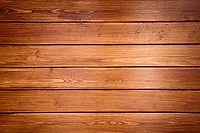Successful design and construction projects require the participating professionals to determine the best ways to meet a client’s immediate and long-term needs. Architectural coatings often play vital roles in attaining such goals.
For example, a customer in the restaurant industry may have a large outdoor seating area. Applying exterior architectural coatings on decks and similar structures helps them withstand weather and frequent use.
Conversely, interior architectural coatings add color and durability to the walls of schools, hospitals, dormitories and other places that may have hundreds of people passing through them daily. Moreover, architectural metal coatings add visual appeal to panels, plus protect from chipping, fading and peeling.
Here’s a look at some of the architectural coating trends that have affected the market and will likely continue doing so for the foreseeable future.
Applying Coatings as Virus Fighters
The COVID-19 crisis necessitated changes to companies worldwide. Many business layouts changed to keep people more spread out, and organizational leaders frequently invested in products such as plastic shields to better protect employees working in customer contact roles.
However, entities in the architectural coatings sector began investigating their role in addressing the virus’s spread. By November 2020, Italian company Stardust Powder Coatings had released a virucidal coating for metal surfaces found indoors. Independent lab tests indicated that the coating showed antiviral activity after remaining in contact with a virus for a couple of hours, as well as a whole day. The added layer reportedly works well on metal furniture and light fixtures.
In another example, a Virginia Tech engineering professor created a coating for stainless steel and glass to inactivate the virus that causes COVID-19. The product caused a 99.9% reduction one hour after application.
The novel coronavirus caused a global health crisis. However, one potentially positive aspect is that it taught people numerous lessons they can use to prevent and minimize future pandemics. Relevant professionals can contribute by continuing to explore how other interior architectural coatings could keep people healthier.
Choosing Coated Surfaces to Reduce Upkeep for Frequently Used Buildings and Structures
People tasked with building or renovating high-traffic structures often apply interior and exterior architectural coatings to reduce the future maintenance required. Even if the associated steps involve more time and money to complete, the additional resources are often worthwhile due to the expenses saved over the long term.
For example, Pennsylvania’s Penn Street Bridge rehabilitation project involved using concrete coatings to get a uniform finish across the new and existing material used while increasing the overall surface protection. The team brought texture to the new smooth concrete with a two-part, breathable and polymer-modified cementitious base coat. Later, they applied a breathable acrylic topcoat to increase longevity and even out the road’s appearance.
People also rely on exterior architectural coatings after considering the intended public use and traffic levels for renovated spaces. For example, they may choose materials with anti-graffiti or scratch-resistant properties to keep them looking beautiful for years despite ongoing use.
Similarly, manufacturers often apply interior architectural coatings to give floors anti-scuff and anti-slip properties. These painted surfaces tolerate frequent use while helping prevent accidents. Considering the amount of moisture in an environment is crucial. A factory’s generally dry areas need less anti-slip protection than those where people frequently use and encounter water. However, choosing strategic colors for the paint can warn individuals of wet areas.
This ongoing trend of people choosing coatings based on anticipated usage and maintenance will remain prominent. That’s especially true as decision-makers assess how to cut long-term costs.
Relying on Window Coatings to Save Energy
Researchers are also curious about how applying architectural coatings on windows could bring more energy efficiency. There’s already a push to prevent wasted power and electricity through products like sensors and smartphone apps. Specialized coatings could become another approach to try along with those.
A team recently created an algorithm to determine the best design parameters for millions of possible scenarios. Additionally, their approach involved building a prototype of a window. It has dozens of layers that work together to control the amount and frequency of light passing through the pane. Some of them feature nanophotonic coatings that adjust the incoming light frequencies. The smart window also has a solar cell, and any light that doesn’t pass through the glass gets converted into electricity.
The above example requires installing a special window with layers of varying thickness. However, another energy-saving approach recently announced by researchers allows using existing windows rather than replacing them with new options. It involves a heat-blocking, electricity-conducting spray that provides a clear, ultra-thin coating.
The developers envision this quick method becoming a standard process for saving money on new builds and retrofitting projects. They also use a programmable automated sprayer that increases scalability.
Using Exterior Architectural Coatings to Address Current and Future Needs
Architectural coatings also encourage designers to have a future-minded outlook when building or renovating structures. One recent example concerned the revamping of a Cincinnati, Ohio, neighborhood called Over the Rhine. Some of the goals were to blend materials and give the improved area a fresh look and not clash with historical buildings.
Architectural metal coatings factored into a 15-year revitalization effort featuring colorful panels on the outside of a multiuse housing and retail development. About 1,700 square feet of aluminum panels included a 70% polyvinylidene fluoride (PVDF) coating with a 30-year warranty on the finish. That protective layer stops the material’s appearance from deteriorating over time.
Another recent example involved creating an ultra-white roof paint to keep structures cooler without so much dependence on air conditioning. Projects mentioned earlier involved applying coatings to a building’s windows. This approach might complement those by targeting a different area of a structure.
Developers suggest that the paint could give 10 kilowatts of cooling power if people cover a 1,000-square-foot roof with it. The formulation has an extremely high concentration of a chemical compound called barium sulfate in various-sized particles. Those pieces help scatter the sun’s light spectrum, causing the paint to be much more reflective than conventional options offer.
Architects make ongoing efforts to design buildings that can withstand climate change’s effects. As many scientists predict rising temperatures, it will become increasingly warranted to make building design choices accordingly.
Architectural Coatings Are Crucial
You may not always notice architectural coatings, but will often pick up on their effects. These additions increase functionality by making a structure cooler or easier to maintain. The trends listed here are shaping the sector and will likely get incorporated into more buildings soon.





Report Abusive Comment